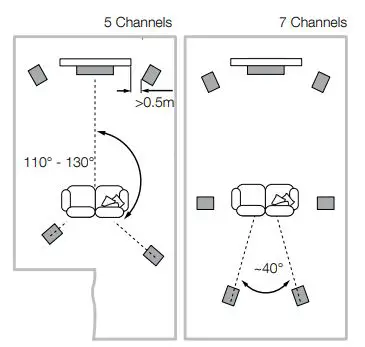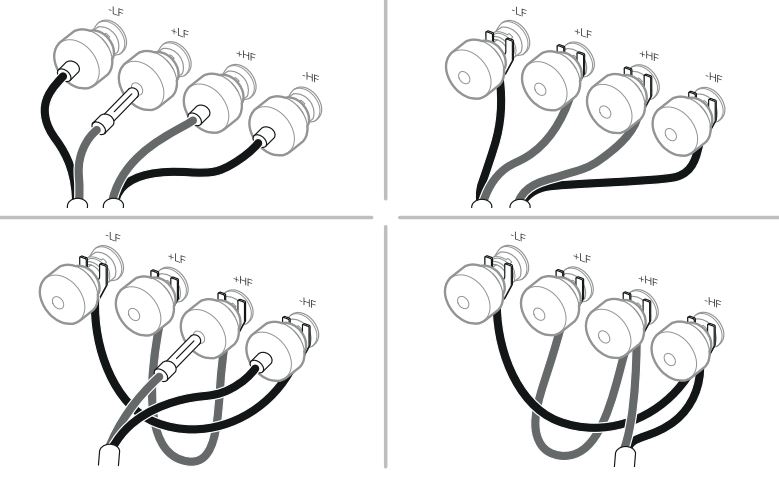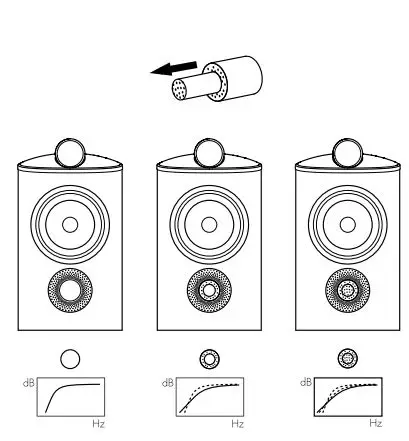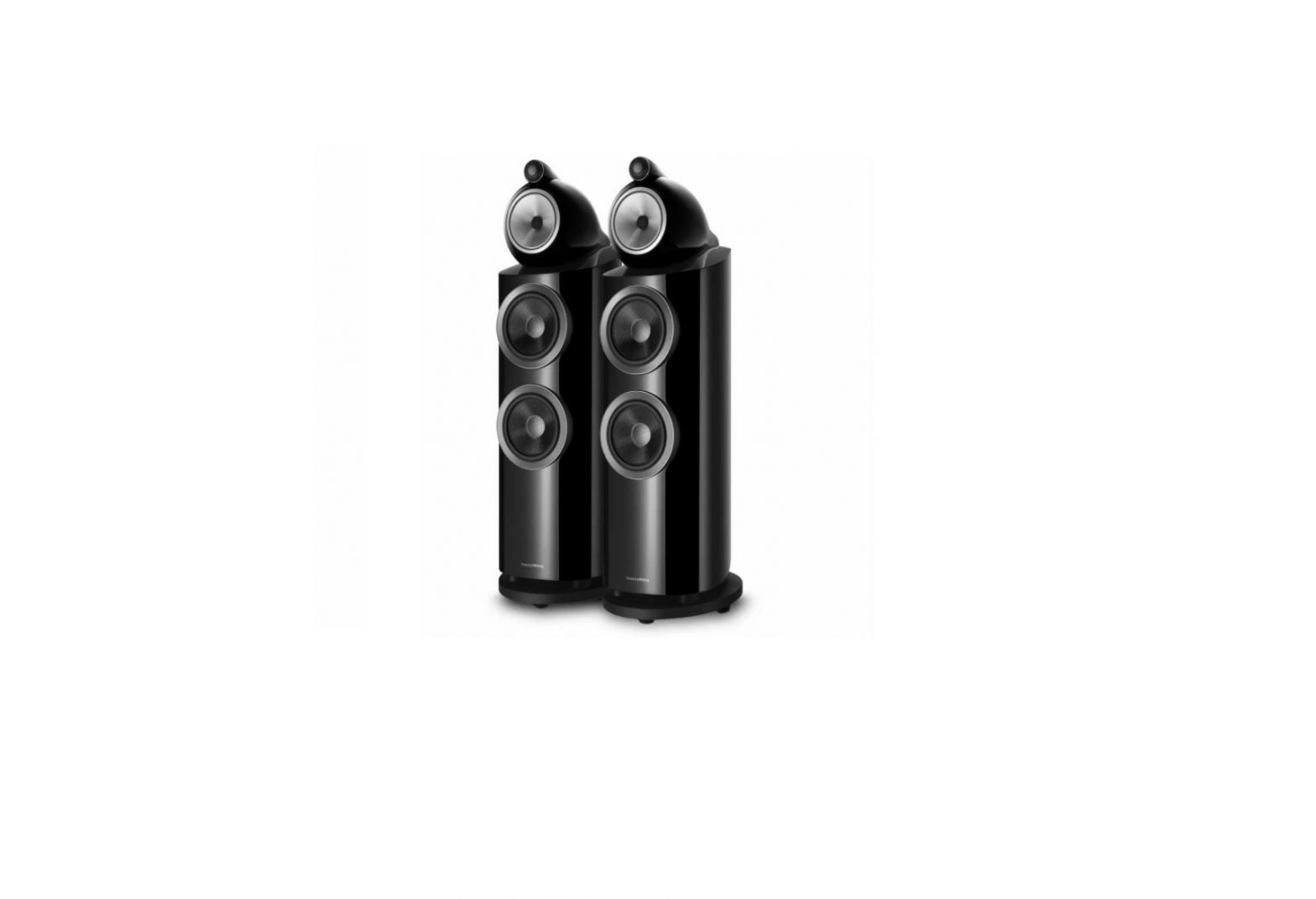Bowers Wilkins 800 Series Diamond Speakers User Manual

Welcome and thank you for choosing Bowers & Wilkins. Our founder, John Bowers, believed that imaginative design, innovative engineering and advanced technology were keys that could unlock the enjoyment of audio in the home. His belief is one that we continue to share and inspires every product we design.The 800 Series Diamond is the world’s most advanced range of loudspeakers. Each model benefits from thoughtful installation, so we would suggest that you take some time to read this manual before you begin the installation process. Continue to page 4
1. Unpacking

Carton Contents
805 D4
- 2 Grilles
- 4 Terminal link wires
- 8 Self-adhesive plastic pads
- 2 Two-part foam plugs
- 1 Cleaning cloth
804 D4
- 2 Midrange grilles
- 4 Bass grilles
- 4 Terminal link wires
- 8 Spikes
- 8 Rubber feet and lock nuts (fitted to the speaker)
- 1 Metal spike adjustment bar
- 1 Lock nut adjustment tool
- 1 Cleaning cloth
The 805 D4 and 804 D4 are very heavy and we strongly suggest that they are unpacked in the room in which they are to be used by two people working together. It is also a sensible precaution to remove jeweler to negate the risk of scratching the speakers’ surface finish.The tables above illustrate the component parts that are packed with the 805 D4 and 804 D4. In the unlikely event that anything is missing please contact the retailer from whom you purchased the speakers.
The heavier bass/midrange grilles attach magnetically and are packed in a separate compartment to prevent movement in transit.Note: Care must be taken when fitting or removing the magnetically attached grilles to avoid marking the product. The grilles will mark the speaker / stand plinth if dropped; you can mitigate against this by covering the plinth when fitting or removing the grilles.Tweeter diaphragms are very delicate and easily damaged. In the 800 Series Diamond we include a steel grille mesh that can protect the tweeter from many forms of damage. However, you should still exercise care when handling and cleaning your loudspeakers.Environmental Information This product complies with international directives, including but not limited to:
i. the Restriction of Hazardous Substances (RoHS) in electrical and electronic equipment,ii. the Registration, Evaluation, Authorization and restriction of Chemicals (REACH)iii. the disposal of Waste Electrical and Electronic Equipment (WEEE).Consult your local waste disposal authority for guidance on how properly to recycle or dispose of this product.
The tweeter assembly on this 800 Series Diamond loudspeaker is a decoupled component that is mechanically isolated from the main part of the cabinet. As such, it may appear to be loose when the product is first removed from its packaging. This is not a fault: it is an inherent feature of the design and ensures optimum performance from your speaker.
If the tweeter assembly has moved slightly during transit and requires adjustment, the assembly can be moved very slightly forwards and backwards to ensure that the rear of the tweeter body is aligned with the rear of the speaker cabinet. The tweeter assembly can also be rotated very slightly to ensure that the Bowers & Wilkins logo is vertically orientated. Do not force the tweeter into any position beyond the soft end-stops when making these adjustments.
Note: Care must be taken to not damage the decoupling assembly when making these adjustments – please seek assistance from your dealer if you are in any doubt about adjusting the tweeter assembly.
2. Positioning


FS-805 D4 or 804 D4FS-805 D4 and 804 D4 are intended to be floor mounted only. It is important to ensure that they stand firmly on the floor using the spike feet supplied whenever possible.
FS-805 D4 and 804 D4 are supplied with both spikes, (intended for mounting the speaker on a carpeted floor) and rubber feet (intended for mounting the speaker on a hard floor).
Note: If the spikes are used on a hard floor, it is advisable to place a hard protective surface between the spikes and the floor to ensure that the floor is not marked by the spike.
In order to stabilize the speaker, initially fully screw the lock nuts onto the spikes/rubber feet. Then screw the spikes/rubber feet fully into the threaded inserts in the base of the speaker/stand. If the speaker/stand rocks when placed on the floor, unscrew the spikes/ rubber feet that do not touch the floor until the speaker/ stand rests firmly without rocking. Finally lock the nuts against the base by using the supplied tool to gently tighten the nut whilst using the supplied bar to stop the spike/rubber foot rotating.
Note: Take care not to mark the finish of the speaker plinth or stand base when using the adjustment tools.
It may be more convenient to fit and adjust the spikes/rubber feet after speaker positioning has been optimized in the room. If fitting or exchanging the spikes/rubber feet, after removing the speaker from itspackaging, the speaker can be carefully lowered onto its side to ease access to the underside of the base. It is advisable to place the speaker on a soft, non- marking surface when lowering it to ensure that the surface finish is not damaged. Once the spikes/rubber feet are fitted, the speaker can be lifted into position.
Note: It is advisable that two people work together to lift the product due to its weight. The speaker should not be dragged across the floor once the spikes/ rubber feet have been installed as this is likely to result in damage to both the speaker and the floor.
Speaker Installation Using Wall Shelves (805 D4 only)The speaker is primarily designed to be mounted on a dedicated floor stand (FS-805 D4), but may be placed on a shelf, although this offers less flexibility to optimize the speaker’s performance. If shelf placement must be used, we recommend using the foam bung inserts (supplied) to optimize port performance (see Finetuning). In both installation cases, the speakers’ tweeters should be approximately at ear height at your usual listening position.
Note: If using a shelf, ensure that it is strong enough to properly support the weight and fit the 4 self-adhesive plastic feet to the underside of the speaker.
Speaker PositioningIn either stereo or home theatre installations, try to ensure that the immediate surroundings of each speaker are similar in acoustic character. For example, if one speaker is adjacent to bare walls while the other is adjacent to soft furnishings and curtains, both the overall sound quality and the stereo image are likely to be compromised.
Conventional Stereo SystemsTo begin with, the speakers should be positioned between 1.5m and 3m apart at two corners of an equilateral triangle completed by the listening area at the third corner. The speakers should be placed at least 0.5m away from the back and any side walls (as per the illustration above).
Home Theatre SystemsIf the speakers are to be used for the front channels in a home theatre system, they should be placed closer together than for 2-channel audio, because the surround channels tend to widen the image. Positioning the speakers within approximately 0.5m of the sides of the screen will also help keep the sound image in scale with the visual image. As with conventional stereo positioning, the speakers should ideally be at least 0.5m away from any side walls.
3. Connections

![]() Important Safety NoticeAll connections should be made with the audio equipment switched off. When using audio equipment in normal operation, touching uninsulated speaker terminals or wiring may result in an unpleasant sensation.
Important Safety NoticeAll connections should be made with the audio equipment switched off. When using audio equipment in normal operation, touching uninsulated speaker terminals or wiring may result in an unpleasant sensation.
The 805 D4 and 804 D4 speaker terminals accept a variety of cable terminations: 4mm banana plugs, 6mm and 8mm (1/4 in and 5/16 in) spades, or bare wires up to 4mm (5/32 in) diameter.
![]()
![]()
![]()
There are two pairs of terminals at the back of each speaker that enable bi-wiring (top). For single wire connection, fit the supplied link wires to join the like polarity terminals together. Bi-wiring can improve the resolution of low-level detail.
Ensure that the positive terminals on the speaker (with red ring) are connected to the positive output terminal on the amplifier and the negative terminals on the speaker (with black ring) are always connected to the negative output terminal on the amplifier. Incorrect connection will not result in damage but will cause poor stereo imaging and loss of bass. Always screw the terminal caps down fully to prevent rattles.
4. Fine Tuning and Running In


Before fine tuning, make sure that all the connections in the installation are correct and secure.
Moving the speakers further from the walls will generally reduce the volume of bass. Space behind the speakers will also help to create an aural impression of depth. Conversely, moving the speakers closer to the walls will increase the volume of bass. (805 D4 only) If you want to reduce the volume of bass without moving the speakers further from the wall, fit the foam plugs or, for less severe bass reduction, the foam rings in the port tubes (above).
If the bass seems uneven with frequency this will most probably be due to resonance modes in the listening room. Even small changes in the position of the speakers or the listening position can have a profound effect on how these resonances affect the sound. Try moving the listening position or locating the speakers along a different wall. The presence and position of large pieces of furniture can also influence resonance modes.
If the central image lacks focus, try moving the speakers closer together or angle them inward so that they point at a location just in front of the listening position.
5. Aftercare
If the sound is too bright, increasing the amount of soft furnishing in the room (heavier curtains for example) may help balance the sound. Conversely, reducing the amount of soft furnishing may help brighten a dull sound.
For the most discerning listening, remove the bass/ midrange grilles by gripping around their edges and gently pulling them away from the cabinet.
The performance of the speaker will change subtly during the initial listening period. If the speaker has been stored in a cold environment, the damping compounds and suspension materials of the drive units will take some time to recover their correct mechanical properties. The drive unit suspensions will also loosen up during the first hours of use. The time taken for the speaker to achieve its intended performance will vary depending on previous storage conditions and how it is used. As a guide, allow up to a week for the temperature effects to stabilize and 15 hours of average use for the mechanical parts to attain their intended design characteristics.
The cabinet surfaces will usually only require dusting. We recommend you use the cloth supplied with the product. If you wish to use an aerosol or other cleaner, apply the cleaner onto the cloth, not directly onto the product and test a small area first, as some cleaning products may damage some of the surfaces. Avoid products that are abrasive, or contain acid, alkali or anti-bacterial agents. Do not use cleaning agents on the drive units. Avoid touching the drive units as damage may result.
Whenever Bowers & Wilkins speakers are finished in real wood, the finest veneers are selected and treated with an ultra-violet resistant lacquer to minimize changes in color over time. Nevertheless, like all natural materials, the veneer will respond to its environment and a degree of color change is to be expected. Color differences may be rectified by exposing all the veneer surfaces equally and evenly to sunlight until the color is uniform. This process can take several days or even weeks, but may be accelerated by careful use of an ultra-violet lamp. Wood veneered surfaces should also be kept away from direct sources of heat such as radiators and warm air vents in order to minimize the possibility of the wood veneer cracking.
The tweeter housing has a textured surface finish that may collect superficial marks when handled and should be cleaned by wiping the supplied cleaning cloth around the housing, in-line with the surface texture.
The leather covered surfaces of your 800 Series Diamond loudspeaker can be dusted using a soft, dry cloth. Stains can be removed from the leather by moistening a microfiber cloth with warm water and using it to dab the leather until clean. Do not rub the cloth on the leather or use cleaning detergents or leather polish as doing so may cause damage to the product.
Bowers & Wilkins
B&W Group Ltd,Dale Road Worthing West Sussex BN11 2BH England
EU Importer: Bowers & Wilkins Beemdstraat 11 5653 MA Eindhoven the Netherlands
Copyright © B&W Group Ltd, E&OE Printed in England
[xyz-ips snippet=”download-snippet”]

